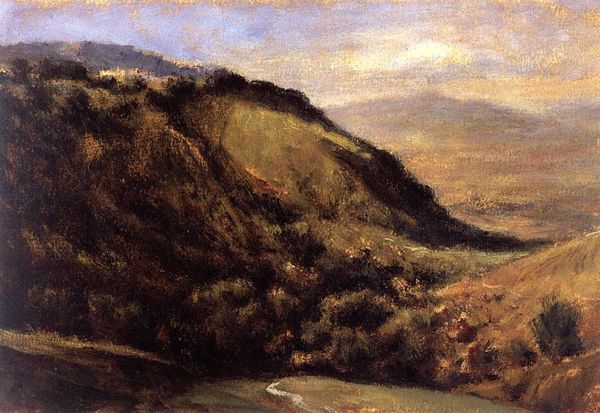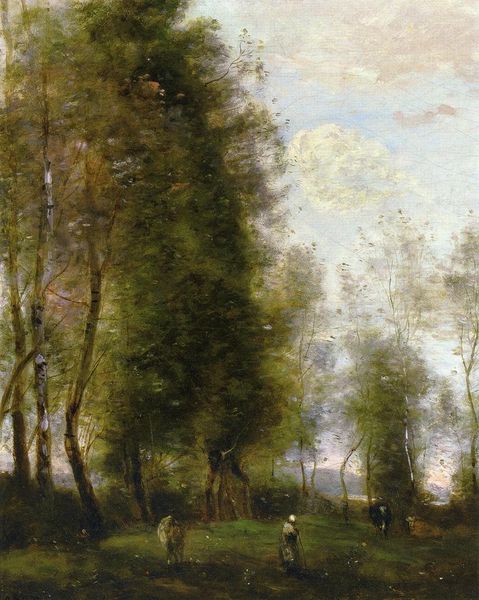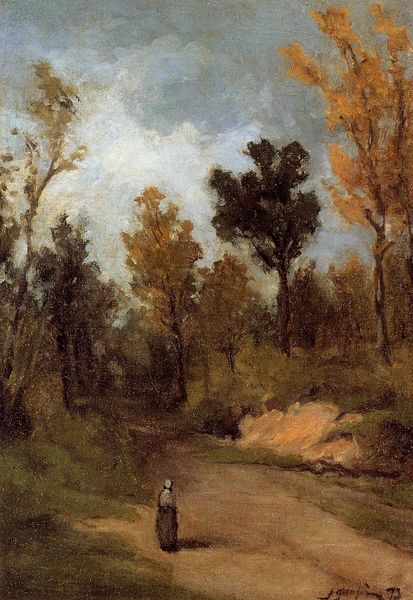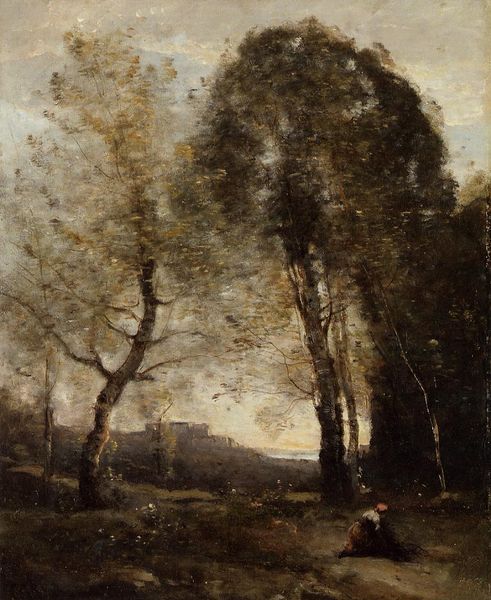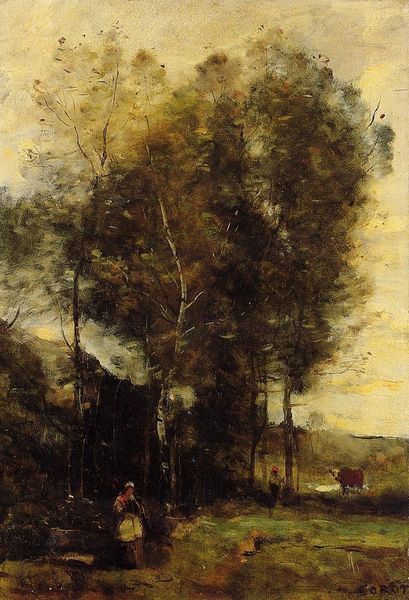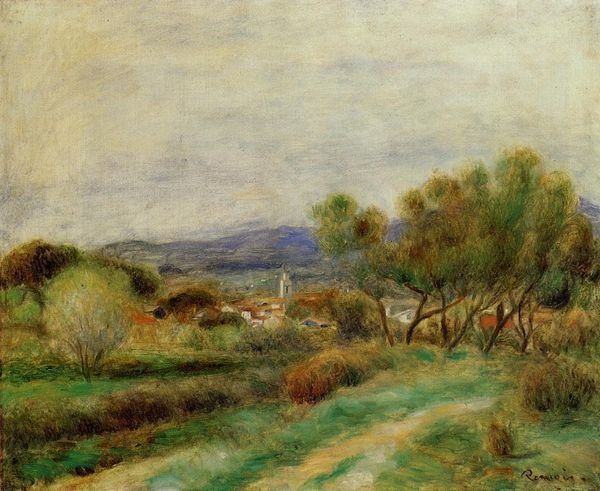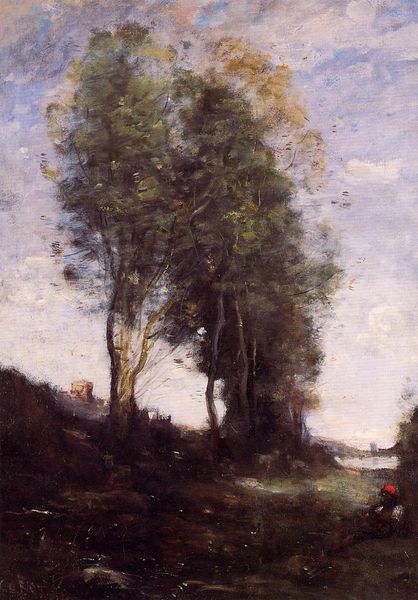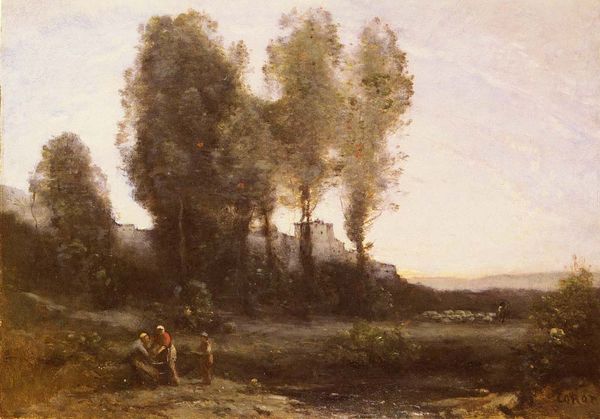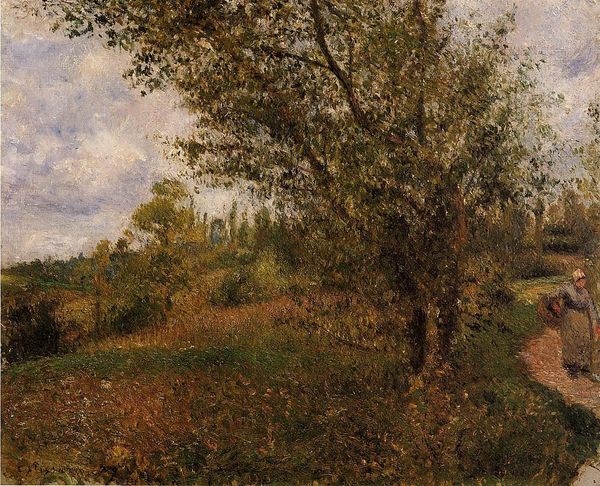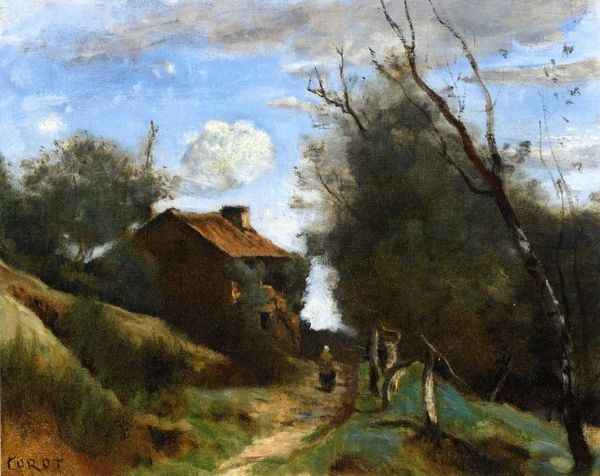
tempera, painting, plein-air, oil-paint
#
tree
#
sky
#
tempera
#
painting
#
plein-air
#
oil-paint
#
landscape
#
figuration
#
oil painting
#
romanticism
#
mountain
#
cityscape
Copyright: Public domain
Editor: This is "In the Vicinity of Geneva" by Camille Corot, painted around 1850. It looks like an oil painting done en plein-air, capturing a landscape with a figure on a path. The muted tones create such a tranquil mood. What draws your eye when you look at it? Curator: Immediately, I see Corot engaging with the means of production for landscape painting at this time. Consider the portability required for painting en plein-air. What kind of labor went into preparing canvases and transporting materials to this site? This informs our understanding, going beyond just the aesthetic experience. Editor: That's interesting, I hadn’t thought about that. It seemed straightforward; an artist with his easel, out in nature. So you're saying we should think about the material conditions that allowed this image to even exist? Curator: Exactly. Also, notice the subtle color variations and the almost hazy rendering. What materials—pigments, oils—are being deployed here, and to what effect? The subdued palette, created from particular pigments, would have been consciously chosen to reflect a certain perception and idealization of the landscape. Editor: I see. So it's not just about representing nature, but about Corot's specific manipulation of materials to create a particular view of nature...almost constructed, in a way. How do we go beyond the aesthetic value then? Curator: We can think about who was consuming these images and what these landscape depictions might have signified to the rising middle class. Consider what relationship the bourgeoisie might have had with "nature," especially in contrast to agricultural laborers tied to the land. The imagery and its consumption are equally important. Editor: I learned a lot about considering how paintings get made from a social, economic, and material context, and about the role that landscapes played in the burgeoning economy of the 19th century. Thanks! Curator: Indeed. Seeing art through a materialist lens really opens up a world beyond the purely visual. I found myself making assumptions that needed revision too.
Comments
No comments
Be the first to comment and join the conversation on the ultimate creative platform.

